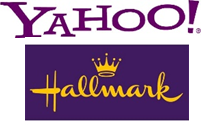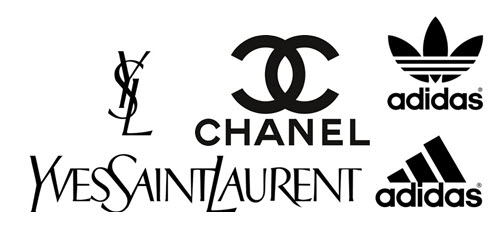What does the color of your logo reveal about your company?
Logo is perhaps the most effective tool for a brand to create a specific identity and image in the minds of potential buyers, and to differentiate it from its competitors. A well designed logo is the result of combining many features and also an indication of a company’s professionalism. But how the logo can attract customers and turn them into your brand’s loyal fans?
According to numerous studies, consumers buy mainly directed from the sense of sight, as it is about 9 times stro nger than all other senses. It is therefore important that the logo focuses on enhancing the optical communication between the client and the product, thus affecting directly emotions and consequently their final purchasing decision. Moreover, studies have shown that among the characteristics that make up a dynamic logo, the color is the one that exerts the greatest influence on customer preferences, and communicate more effectively the values and philosophy of the company. Indeed, the interaction of customers with specific colors could raise awareness of the logo and therefore the company by up to 70%. At this point it is worth mentioning that the color helps to improve the perception of skills / understanding /
nger than all other senses. It is therefore important that the logo focuses on enhancing the optical communication between the client and the product, thus affecting directly emotions and consequently their final purchasing decision. Moreover, studies have shown that among the characteristics that make up a dynamic logo, the color is the one that exerts the greatest influence on customer preferences, and communicate more effectively the values and philosophy of the company. Indeed, the interaction of customers with specific colors could raise awareness of the logo and therefore the company by up to 70%. At this point it is worth mentioning that the color helps to improve the perception of skills / understanding /  consolidation, learning and reading of potential buyers by 73%, 55-68% and 40% respectively.
consolidation, learning and reading of potential buyers by 73%, 55-68% and 40% respectively.
More specifically, consumers subconsciously decide to pick a product from the shelf in less than 90 seconds and the majority of them (62-90%) decide solely on color. In fact, nearly 85% of consumers chose color as the main reason to buy a particular product, while 80% of them believe that the color enhances the visibility of the logo and therefore the brand. The same survey showed that 2/3 of consumers avoided to buy products that were not available in their desired color.
So what steps or tactics should a company follow to design an attractive and effective logo, in terms of color, in order to impress the potential customers?
 > Factors such as gender, age, education, personal experiences and even the origin and culture can influence the decision, when the brands take seriously into account the branding strategies and marketing initiatives that follow. For example:
> Factors such as gender, age, education, personal experiences and even the origin and culture can influence the decision, when the brands take seriously into account the branding strategies and marketing initiatives that follow. For example:
─ the red color in Western countries symbolizes power, passion and excitement, in Eastern European countries refer to communism, in Asian countries it is associated with happiness, prosperity, good luck and longevity, while in the Middle East is synonymous with risk.
─ Men and women prefer blue and green, while the blue is more preferred by men. Also the pink color has a greater impact on women
> Certain colors arouse specific emotions and influence consumers’ psychology. In particular:
─ Blue color re fers to the sky and the sea and is connected with secure and peaceful feelings. The use of the logo (e.g. twitter, LinkedIn, Ford), is usually designed to create a sense of security and a relationship of trust with prospective customers.
fers to the sky and the sea and is connected with secure and peaceful feelings. The use of the logo (e.g. twitter, LinkedIn, Ford), is usually designed to create a sense of security and a relationship of trust with prospective customers.
─ The red color attracts attention, increases appetite and causes strong emotions to consumers, while its use over a logo gives power to the brand.
─ Orange is associated with playfulness, friendliness, creativity and enthusiasm, and creates a feeling of comfort and joy to the customers.
 ─ The yellow color creates a feeling of optimism and joy, and can attract consumer’s attention in the window shops. It is should be emphasized, nonetheless, that the bright shades of that color could tire human eye. In general, a yellow logo transmits the message that the company is friendly and
─ The yellow color creates a feeling of optimism and joy, and can attract consumer’s attention in the window shops. It is should be emphasized, nonetheless, that the bright shades of that color could tire human eye. In general, a yellow logo transmits the message that the company is friendly and  pleasant.
pleasant.
─ Green refers to nature, represents growth and wealth, and creates a feeling of relaxation and rejuvenation. A green logo conveys the message that a company is environmentally friendly or that its products are good for the human health (eg Starbucks, Perrier).
 ─ Purple is the classic color of Sirs and kings and is associated with wealth and luxury, as well as with imagination, mystery and magic. No wonder brands in the beauty industry often use shades of purple in their logos (eg Claire’s, Essence).
─ Purple is the classic color of Sirs and kings and is associated with wealth and luxury, as well as with imagination, mystery and magic. No wonder brands in the beauty industry often use shades of purple in their logos (eg Claire’s, Essence).
─ Although the black color seems ordinary, it is synonymous with sophistication, elegance, mystery and charm and is therefore used by luxury goods brands (eg D & G, Gucci, Boss, Fendi).
Therefore, color is an effective tool to diversify and strengthen the awareness of a brand and it can be proved more powerful than the words themselves. It is the first thing customers inadvertently notice in the brand logo, which will definitely affect the final purchasing decision, and creates specific emotions and transmits vivid values representing the brand. To conclude, understanding the emotional consumer connections with specific colors is the key for successful logo creations.
References : Larry Kim (2015), Helen Stark (2014),Rachel Gillet(2014), WebpageFX Team (2013), www.motocms.com

